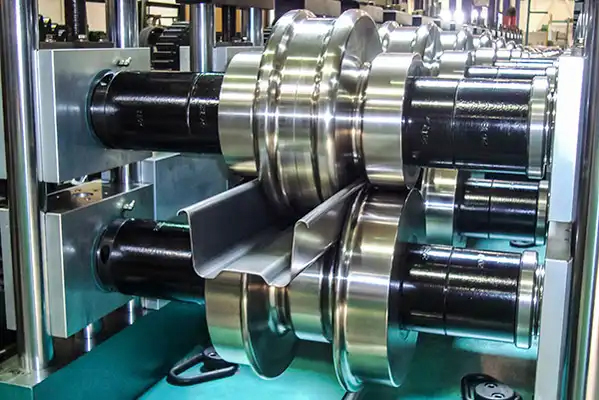Navigation Menu
Contact Us
- Email:
- info@wxavatar.com
- Address:
- Yurong Village, Yuqi Street, Huishan District, Wuxi, China.
Release Date:Mar 12, 2025 Visit:60 Source:Roll Forming Machine Factory
The automotive industry has long been a cornerstone of global manufacturing, driving innovation and economic growth. At the heart of this industry lies the continuous evolution of manufacturing technologies of automotive, which have transformed how vehicles are designed, produced, and assembled. From the early days of manual craftsmanship to today’s highly automated and digitized production lines, these technologies have revolutionized the automotive sector, enabling faster production, higher precision, and improved sustainability.
The Role of Advanced Manufacturing Technologies in Automotive Production
The manufacturing technologies of automotive encompass a wide range of processes and systems that contribute to the creation of vehicles. These include traditional methods such as stamping, welding, and painting, as well as cutting-edge techniques like additive manufacturing (3D printing), robotics, and artificial intelligence (AI). Each of these technologies plays a critical role in ensuring that modern vehicles meet the highest standards of quality, safety, and performance.
One of the most significant advancements in recent years is the adoption of automation and robotics in automotive manufacturing. Robots are now integral to tasks such as welding, painting, and assembly, offering unparalleled precision and efficiency. For example, robotic arms can perform complex welding operations with minimal error, while automated guided vehicles (AGVs) streamline the movement of materials across the factory floor. This level of automation not only reduces production time but also minimizes human error, leading to higher-quality vehicles.
Another transformative technology is additive manufacturing, commonly known as 3D printing. This method allows automotive manufacturers to create complex components with minimal waste, reducing material costs and environmental impact. From prototyping to producing end-use parts, 3D printing has become an indispensable tool in the automotive industry, enabling faster innovation and customization.
The Integration of Digital Technologies
In addition to physical manufacturing processes, digital technologies have become a cornerstone of modern automotive production. Computer-aided design (CAD) and computer-aided manufacturing (CAM) systems allow engineers to design and simulate vehicle components with incredible accuracy. These digital tools enable manufacturers to identify potential issues before production begins, reducing the risk of costly errors.
Moreover, the rise of the Internet of Things (IoT) has paved the way for smart factories, where machines and systems are interconnected and communicate in real time. In the context of manufacturing technologies of automotive, IoT enables predictive maintenance, where sensors monitor equipment performance and alert operators to potential failures before they occur. This not only minimizes downtime but also extends the lifespan of machinery, resulting in significant cost savings.

Sustainability in Automotive Manufacturing
As the world shifts toward a more sustainable future, the manufacturing technologies of automotive are evolving to support this transition. Electric vehicles (EVs) are a prime example, requiring new manufacturing processes and materials. For instance, the production of lithium-ion batteries for EVs involves advanced techniques such as electrode coating and cell assembly, which demand high precision and efficiency.
Additionally, manufacturers are increasingly adopting green manufacturing practices, such as using renewable energy sources and recycling materials. Technologies like closed-loop recycling systems allow automotive companies to reuse materials like aluminum and steel, reducing waste and conserving resources. These efforts not only align with global sustainability goals but also enhance the industry’s reputation among environmentally conscious consumers.
The Future of Automotive Manufacturing Technologies
Looking ahead, the manufacturing technologies of automotive are poised to undergo further transformation. Emerging trends such as artificial intelligence (AI) and machine learning are expected to play a larger role in optimizing production processes. AI-powered systems can analyze vast amounts of data to identify inefficiencies and suggest improvements, leading to smarter and more agile manufacturing operations.
Furthermore, the integration of augmented reality (AR) and virtual reality (VR) into automotive manufacturing is set to revolutionize training and quality control. For example, AR can provide real-time guidance to workers on the assembly line, while VR can simulate production environments for training purposes. These technologies will not only enhance productivity but also improve worker safety and satisfaction.
Conclusion
The manufacturing technologies of automotive have come a long way, shaping the industry into a powerhouse of innovation and efficiency. From automation and robotics to digital tools and sustainable practices, these technologies have redefined how vehicles are made, ensuring that the automotive sector remains at the forefront of global manufacturing. As new advancements continue to emerge, the future of automotive manufacturing promises to be even more dynamic, driving progress and delivering vehicles that are safer, smarter, and more sustainable than ever before.